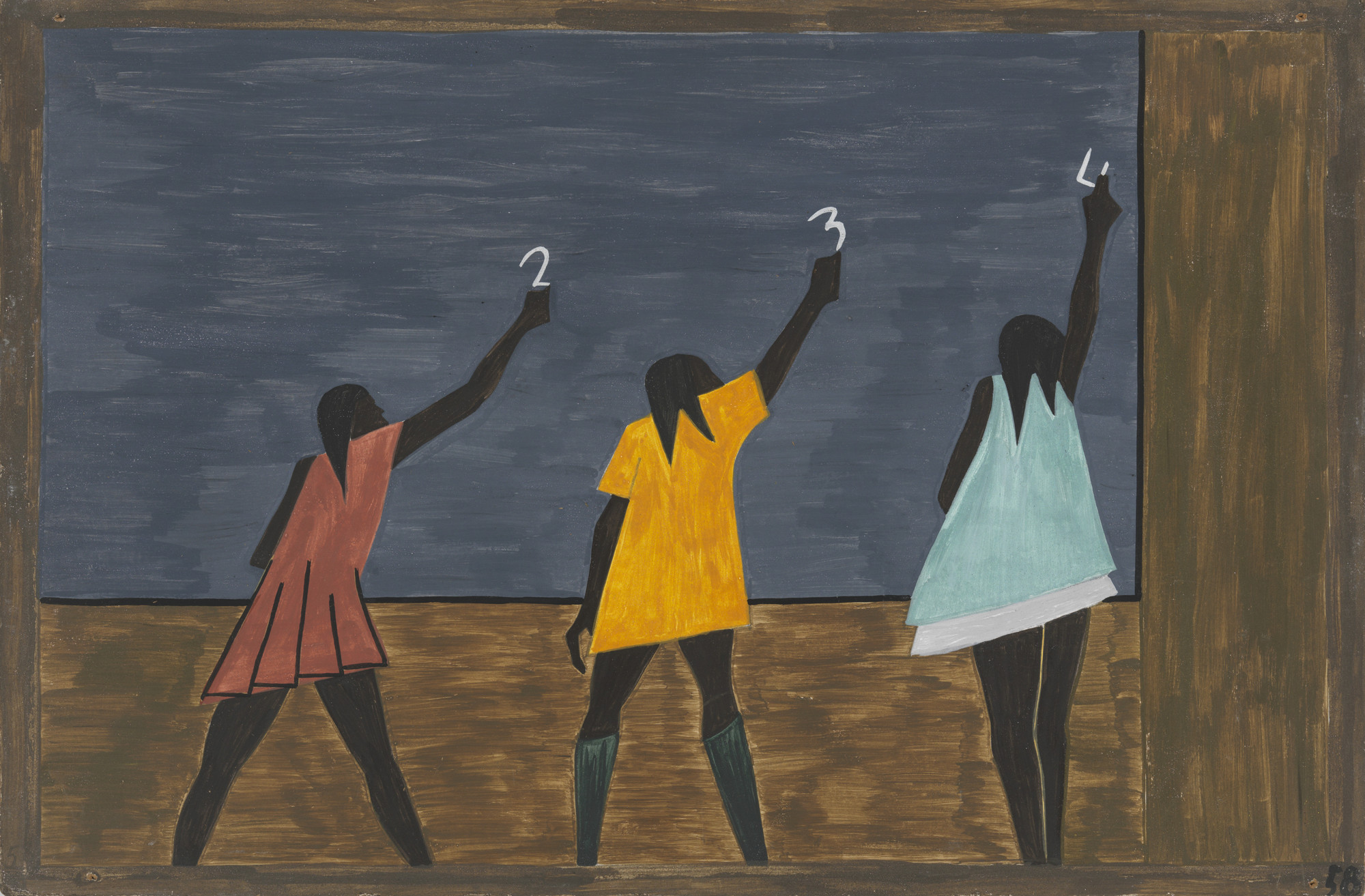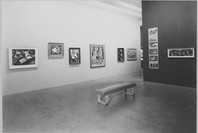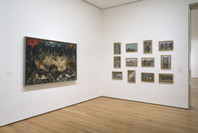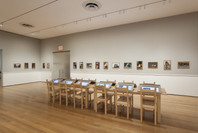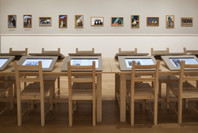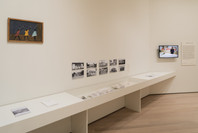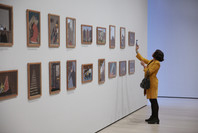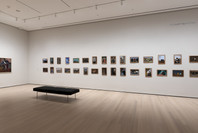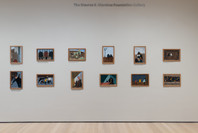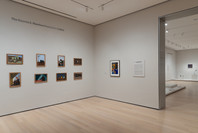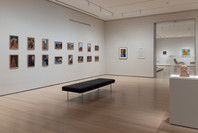In these works Lawrence focuses on the Great Migration, the exodus of African Americans from the rural South to northern and western cities beginning during World War I. The son of migrants himself, Lawrence researched extensively before starting to paint, distilling this relocation of millions into intimate vignettes. The series contains sixty panels in all, thirty of which appear here. Through an unusual decision to split the work in half, the Phillips Collection in Washington, DC, acquired the odd-numbered panels and MoMA the even-numbered ones. Using vibrant patterns, blocks of color, and pared-down, angular figures and forms, Lawrence tells a clear story of a historic event.
Gallery label from "Collection 1940s—2970s", 2019
During the first half of the twentieth century, as the expanding modern industries in America’s northern cities demanded ever more workers, great numbers of African Americans saw a chance to escape the poverty and discrimination of the rural South. Between 1916 and 1930, more than a million people moved north. Lawrence’s parents made the journey, and he grew up hearing stories about it; as a young artist living in Harlem, the heart of New York’s African American community, he recognized it as an epic theme. Originally known as The Migration of the Negro but renamed by the artist in 1993, this cycle of sixty images—each accompanied by a caption written by the artist—chronicles a great exodus and arrival.
Visually, the cycle advances through panels of incident and panels of near abstraction and emptiness. Using exaggerated perspectives, rhythmic compositions, astringent colors, and angular figures, Lawrence bent decorative forms to the task of history, making social realism compatible with abstract art. African Americans met with a mixed reception in the North; along with jobs, the vote, and education, the new life brought unhealthy living conditions, civil unrest, and other trials, all documented in Lawrence’s cycle along with his community’s heroic perseverance in facing them.
Publication excerpt from MoMA Highlights: 375 Works from The Museum of Modern Art, New York (New York: The Museum of Modern Art, 2019)
These thirty paintings constitute half of the sixty-panel Migration Series, shared between MoMA and the Phillips Collection in Washington, D.C. Lawrence took as his subject the exodus of African Americans from the rural South to Northern cities during and after World War I, when industry's demand for workers attracted them in vast numbers. As the son of migrants, Lawrence had a personal connection to the topic. He researched the subject extensively and wrote the narrative before making the paintings, taking seriously the dual roles of educator and artist.
Lawrence was influenced by the work of the Mexican muralists and earlier artists such as Goya, but he drew his stylistic inspiration primarily from the Harlem community in which he lived. The vivid pattern and color—created in tempera paint as Lawrence worked on all the panels at once—reflect an aesthetic that itself had migrated from the South.
Gallery label from 2012.
